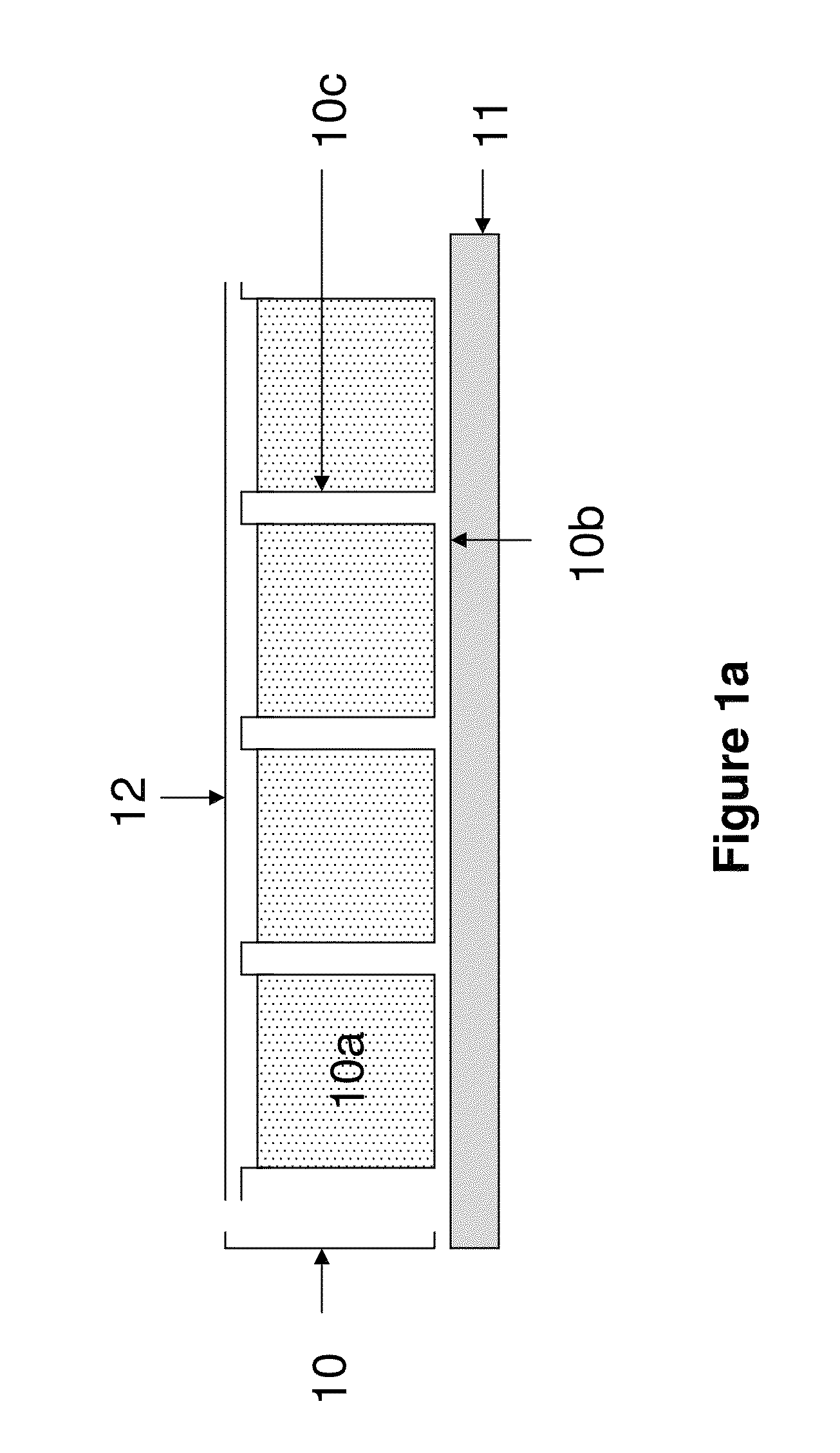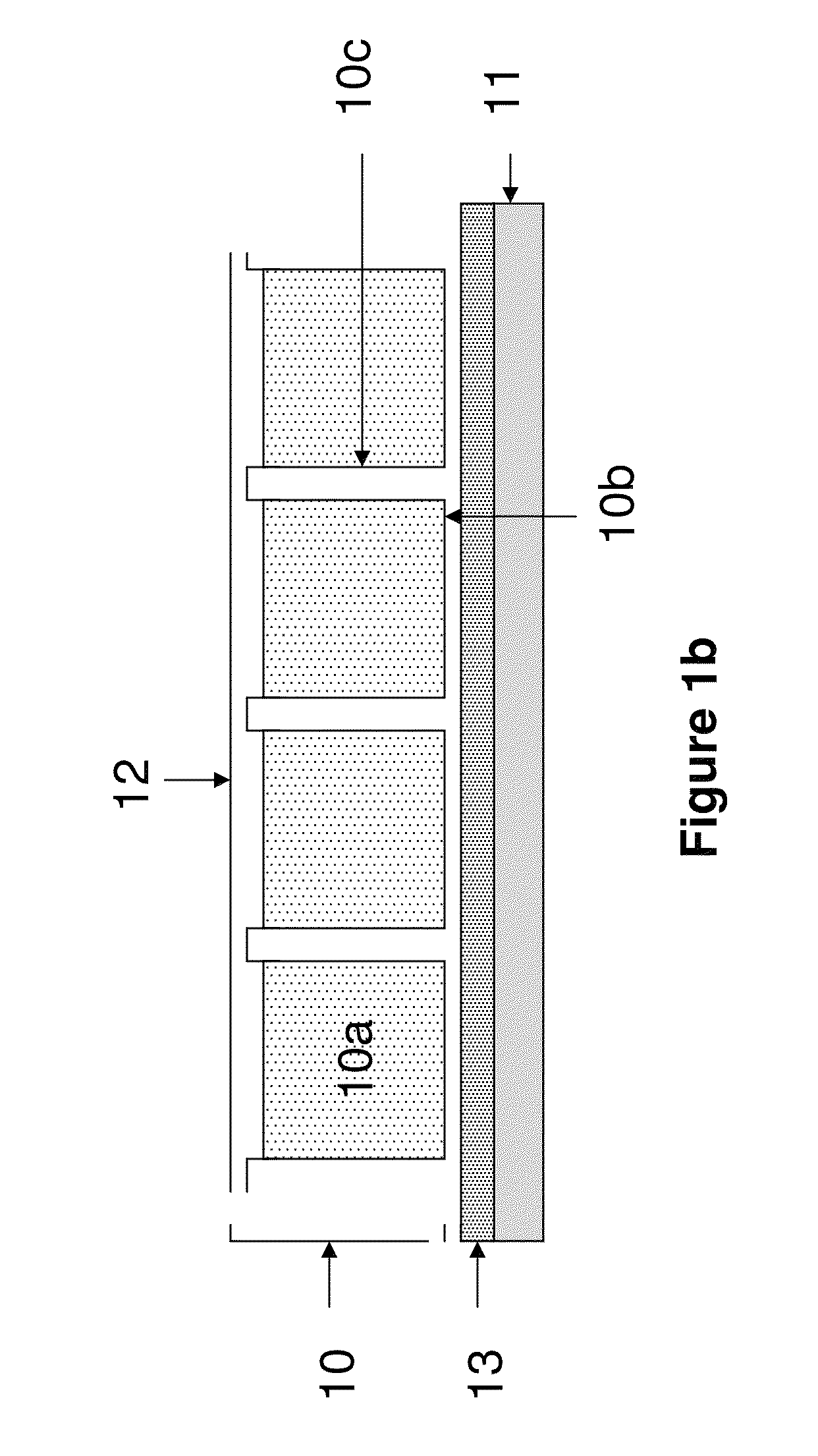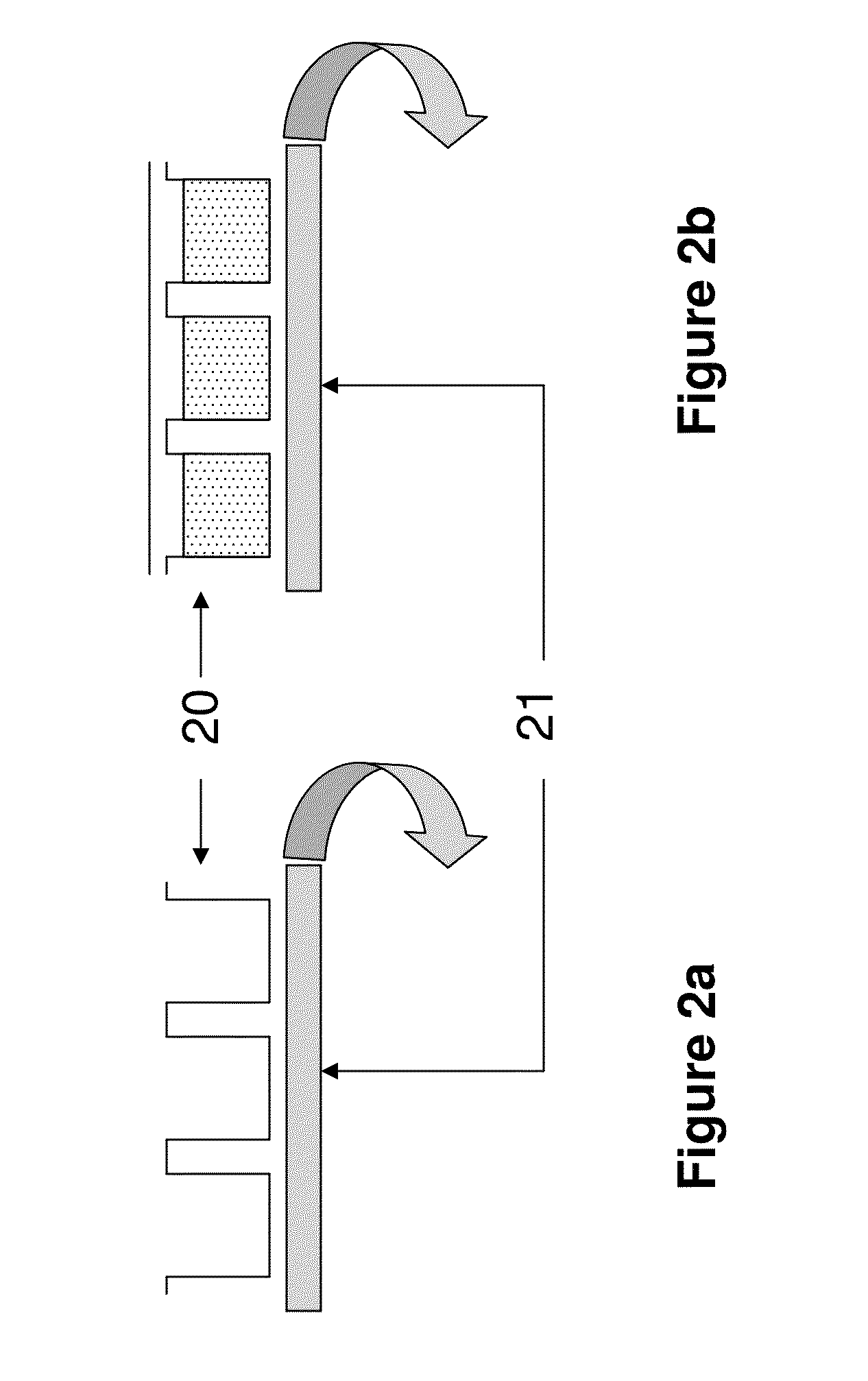Microcup compositions
a technology of micro-cups and compositions, applied in the field of micro-cups, can solve the problems of difficult peeling of the micro-cup layer from the substrate layer, the formation of the display panel is normally a very thin layer and therefore fragile, and the approach has its disadvantages
- Summary
- Abstract
- Description
- Claims
- Application Information
AI Technical Summary
Benefits of technology
Problems solved by technology
Method used
Image
Examples
example 2
Microcup Composition with Difunctional Components
[0107]21 Parts by weight of a binding agent for coating sold under EBECRYL® 8808 (Cytec), 39.7 parts of SR-602 (Sartomer), 25 parts of CD9038 (Sartomer), 4 parts of Silwet 7607 (Momentive), 9.86 parts of CN373 (Sartomer), 0.2 parts of 4-benzoyl-4′-methyldiphenylsulphide, and 0.24 parts of 2,4,6-trimethylbenzoyl diphenyl phosphine oxide were mixed homogeneously and used for the tensile test.
example 3
Tensile Test of Cured Microcup Materials
[0108]The microcup compositions of Examples 1 and 2 were coated onto 5 mil PET film with a targeted dry thickness of about 100 um, covered by PET release film, and then cured for 20 seconds under UV light at an intensity of 5 mW / cm2. The PET cover sheet was removed. The cured microcup layer was peeled off from the PET substrate and cut into stripes with a width of 1.25 cm and a length of 10 cm. The tensile test was then conducted by Instron at 50 mm / min. The results listed in Table 1 were the average of at least 5 measurements. The microcup composition containing difunctional components showed much improved elongation at break and toughness.
[0109]
TABLE 1Example 1Example 2Tensile Strength (N / m2)8.25 × 106 3.95 × 106Elongation at Break (%)1.3122.86Toughness (J / m3)5.37 × 10645.43 × 106
example 4
Tensile Test of Panel
[0110]The microcup composition of Example 2 was used to prepare the microcup array with a thickness of around 27 um by microembossing according to U.S. Pat. No. 6,930,818. The electrophoretic fluid comprising charged pigment particles dispersed in a hydrocarbon solvent was coated onto the microcup array on a ITO / PET substrate film. The filled microcups are then sealed with a sealing layer with a thickness of around 17 um, following a one-pass procedure, according to U.S. Pat. No. 6,930,818. The microcup-based panel was then peeled off from the ITO / PET substrate film and subjected to the tensile test as described in Example 3.
[0111]The elongation was measured to be 18% before the microcup structure was damaged.
[0112]This same test could not be carried out with the microcup composition of Example 1 because the panel prepared from the composition of Example 1 could not be separated from the ITO / PET substrate film, without causing damages to the panel.
PUM
| Property | Measurement | Unit |
|---|---|---|
| elongation at break | aaaaa | aaaaa |
| elongation at break | aaaaa | aaaaa |
| elongation at break | aaaaa | aaaaa |
Abstract
Description
Claims
Application Information
 Login to View More
Login to View More - R&D
- Intellectual Property
- Life Sciences
- Materials
- Tech Scout
- Unparalleled Data Quality
- Higher Quality Content
- 60% Fewer Hallucinations
Browse by: Latest US Patents, China's latest patents, Technical Efficacy Thesaurus, Application Domain, Technology Topic, Popular Technical Reports.
© 2025 PatSnap. All rights reserved.Legal|Privacy policy|Modern Slavery Act Transparency Statement|Sitemap|About US| Contact US: help@patsnap.com



